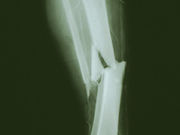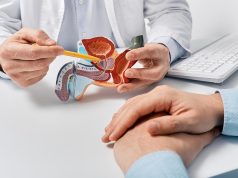Inverse correlation for DHEAS levels with risk of any fracture, non-vertebral major osteoporotic fractures
WEDNESDAY, March 22, 2017 (HealthDay News) — For older men, low serum levels of the adrenal-derived hormones dehydroepiandrosterone (DHEA) and its sulfate (DHEAS) are a risk marker for fractures, according to a study published online March 9 in the Journal of Bone and Mineral Research.
Claes Ohlsson, M.D., Ph.D., from the University of Gothenburg in Sweden, and colleagues analyzed serum DHEAS levels with mass spectrometry for 2,568 participants (age 69 to 81 years) from the population-based Osteoporotic Fractures in Men study in Sweden.
The researchers ascertained a total of 594 incident X-ray-validated fractures during a median follow-up of 10.6 years. After adjustment for age, body mass index, and prevalent fractures, there was an inverse association between DHEAS levels with the risk of any fracture (hazard ratio per standard deviation decrease, 1.14; 95 percent confidence interval, 1.05 to 1.24), non-vertebral major osteoporotic fractures (hazard ratio, 1.31; 95 percent confidence interval, 1.16 to 1.48), and hip fractures (hazard ratio, 1.18; 95 percent confidence interval, 1.02 to 1.37), but not with clinical vertebral fractures (hazard ratio, 1.09; 95 percent confidence interval, 0.95 to 1.26). The associations were slightly attenuated after further adjustment for traditional risk factors for fracture, bone mineral density, and/or physical performance variables.
“In conclusion, low serum DHEAS levels are a risk marker of mainly non-vertebral fractures in older men, of whom those with DHEAS levels below 0.60 µg/ml are at highest risk,” the authors write.
The study was partially funded by the Novo Nordisk Foundation.
Copyright © 2017 HealthDay. All rights reserved.








